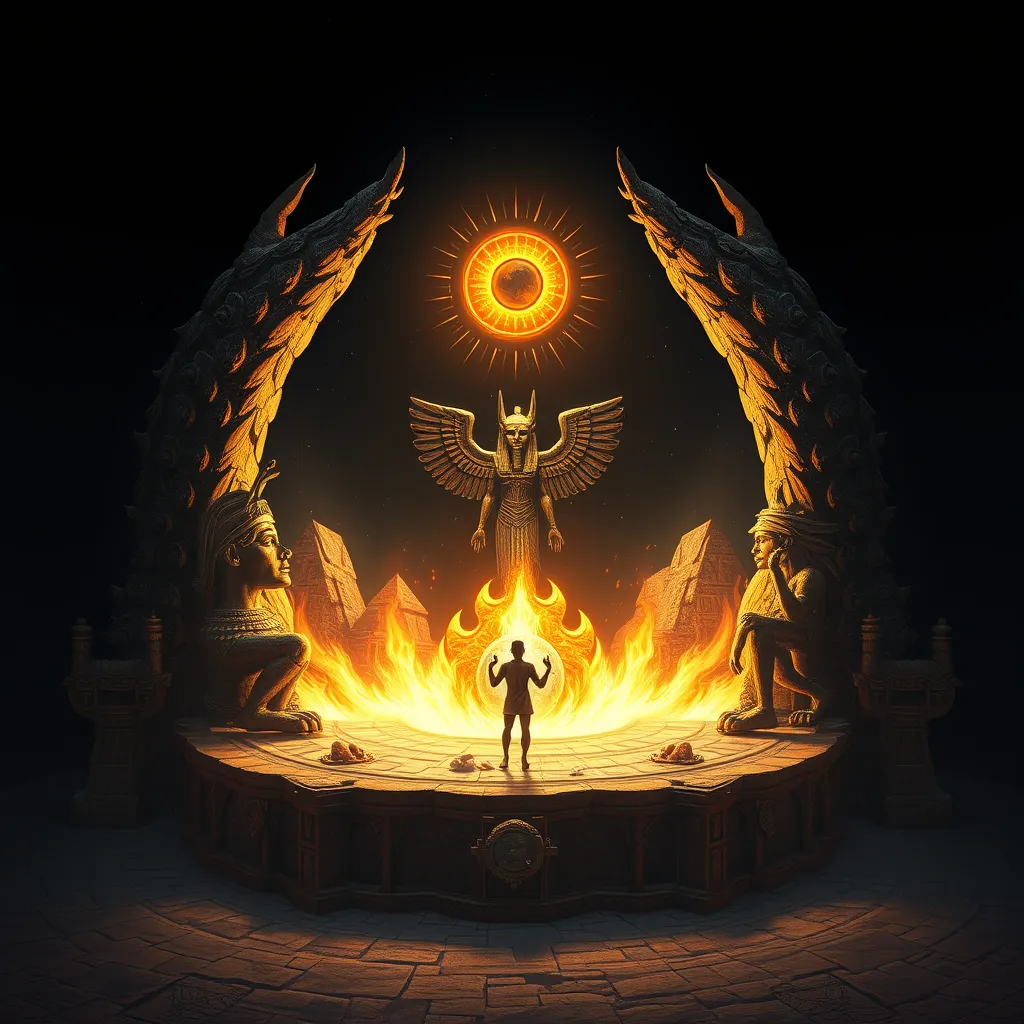The Duat: The Eternal Cycle of Life and Death
I. Introduction to the Duat
The Duat, a concept deeply rooted in ancient Egyptian mythology, represents the realm of the afterlife where the souls of the deceased embark on a transformative journey. This mystical dimension is not merely a place of rest; it embodies the complexities of existence, highlighting the cyclical nature of life, death, and rebirth. Understanding the Duat is crucial for comprehending the ancient Egyptians’ perceptions of mortality and the divine.
II. The Mythological Context of the Duat
The origins of the Duat can be traced back to the earliest Egyptian beliefs, where it served as a fundamental aspect of their cosmology. The Duat is often depicted as a dark, ethereal landscape filled with rivers, fields, and various challenges that the soul must navigate.
Several key deities are associated with the Duat, including:
- Osiris: The god of the afterlife, resurrection, and fertility, Osiris presides over the Duat and judges the souls of the deceased.
- Anubis: The god of mummification and the afterlife, Anubis is responsible for guiding souls through the Duat and overseeing the “Weighing of the Heart.”
- Ma’at: The goddess of truth and justice, Ma’at plays a crucial role in maintaining cosmic order, essential for the soul’s journey.
The Duat’s place in Egyptian cosmology illustrates the interconnectedness of life and the afterlife, emphasizing that death is not an end but a transition to a new form of existence.
III. The Journey Through the Duat
The journey through the Duat is a significant aspect of ancient Egyptian beliefs regarding the afterlife. Upon death, the soul embarks on a perilous journey filled with challenges that test its worthiness.
Central to this journey is the “Weighing of the Heart” ceremony, where the deceased’s heart is weighed against the feather of Ma’at. This ceremony determines the soul’s fate:
- If the heart is lighter than the feather, the soul is deemed worthy and granted passage to the afterlife.
- If the heart is heavier, it is devoured by Ammit, a fearsome creature, resulting in eternal oblivion.
Throughout the Duat, the deceased must confront various obstacles, including treacherous monsters and deceptive spirits, which symbolize their fears and sins. Overcoming these challenges is essential for achieving eternal life.
IV. Symbolism of the Duat
The Duat is rich in symbolism, representing the intricate relationship between life, death, and rebirth. It is a realm where transformation occurs, embodying the ancient Egyptians’ beliefs about the cyclical nature of existence.
Artistic representations and inscriptions related to the Duat often depict:
- Fields of reeds symbolizing rebirth and growth.
- Dark waters representing the unknown aspects of death.
- The sun’s journey through the Duat, symbolizing the cycle of day and night, life and death.
The symbolism of the Duat reinforces the idea that death is not an end but a necessary step towards spiritual evolution and renewal.
V. The Role of Funerary Practices
Funerary practices in ancient Egypt were vital for ensuring a successful transition to the Duat. Mummification and elaborate burial rituals were performed to preserve the body for the afterlife.
Key components of these practices included:
- Mummification: The process of preserving the body to prevent decay, allowing the soul to recognize its physical form in the Duat.
- Funerary texts: Texts such as the Book of the Dead provided guidance for the deceased, outlining spells and incantations to aid in navigating the Duat.
- Offerings: Objects and food were placed in tombs to provide for the deceased in the afterlife, ensuring they were not left wanting in the Duat.
These practices reflect the Egyptians’ deep reverence for the afterlife and their desire to maintain a connection with their loved ones who had passed.
VI. The Duat in Ancient Egyptian Literature
The Duat features prominently in ancient Egyptian literature, with key texts such as the Book of the Dead offering insights into the beliefs surrounding the afterlife. These narratives provide a detailed account of the soul’s journey and the trials it faces.
Within these texts, we find:
- Descriptions of the landscapes and challenges of the Duat.
- Spells designed to protect the deceased and assist them in their journey.
- Teachings on morality, emphasizing the importance of living a just life to ensure a favorable outcome in the afterlife.
The literature surrounding the Duat has greatly influenced our understanding of ancient Egyptian beliefs and their rich spiritual heritage.
VII. The Duat’s Influence on Modern Culture
The concept of the Duat continues to resonate in modern culture, influencing various forms of art, literature, and spirituality. Contemporary interpretations often explore themes of the afterlife and the nature of existence.
Examples of the Duat’s influence include:
- Literature: Modern novels often incorporate themes of the afterlife, drawing inspiration from ancient Egyptian mythology.
- Film: Movies that depict the afterlife frequently reference the Duat, presenting it as a mystical realm.
- Art: Contemporary artists explore the symbolism of the Duat in their work, reflecting on life, death, and transformation.
This ongoing fascination with the Duat highlights humanity’s enduring quest for understanding the mysteries of life and death.
VIII. Conclusion: The Duat’s Legacy
The Duat stands as a testament to the ancient Egyptians’ profound understanding of life, death, and the eternal cycle that connects them. It has shaped their ideas of morality, justice, and the afterlife, influencing countless generations.
In reflecting on the Duat’s legacy, we recognize its relevance in today’s world:
- It encourages a deeper exploration of our own beliefs about life and the afterlife.
- It serves as a reminder of the universal human experience of loss and the quest for meaning beyond death.
Ultimately, the Duat invites us to contemplate our existence and the journeys we undertake, both in life and beyond.




